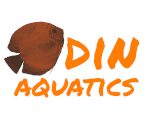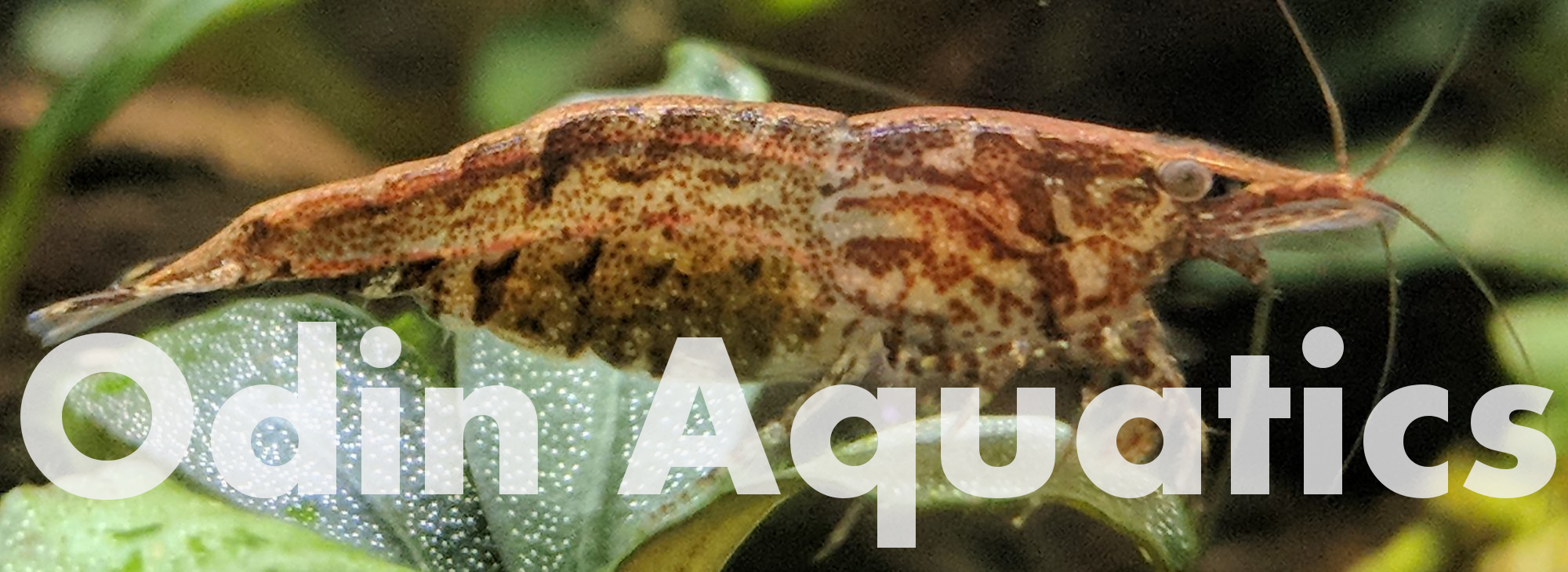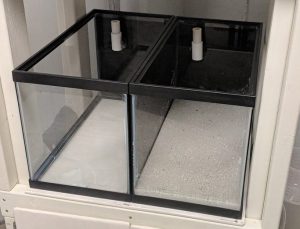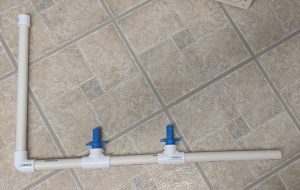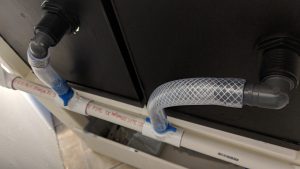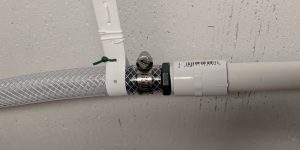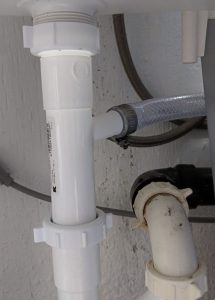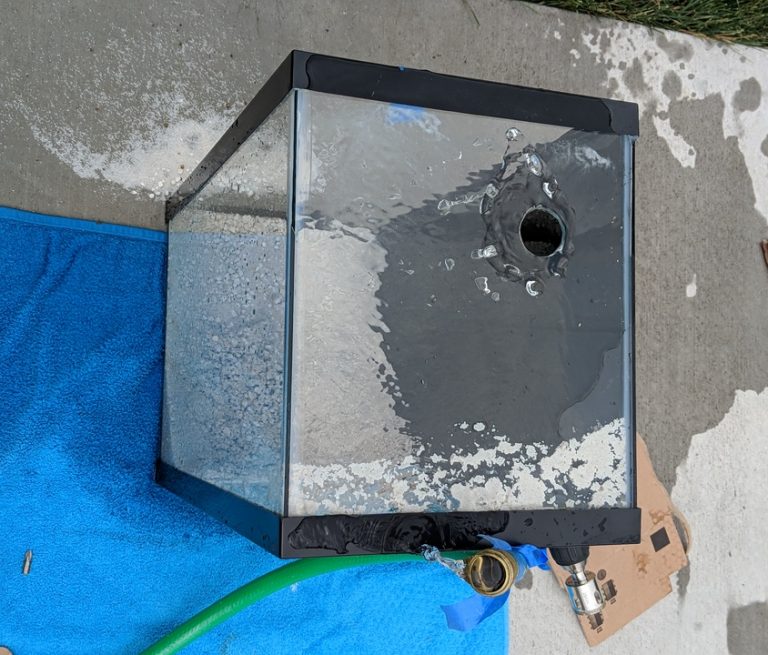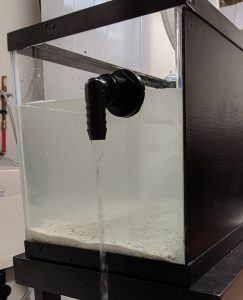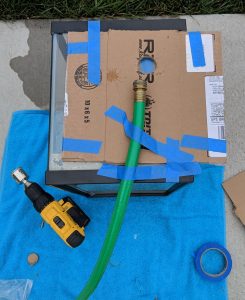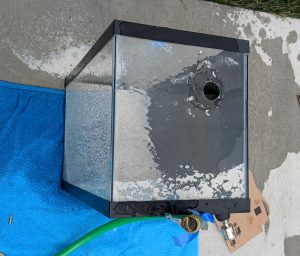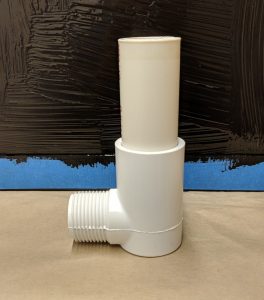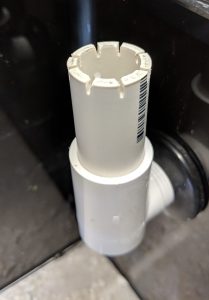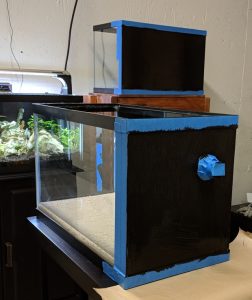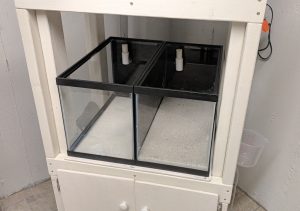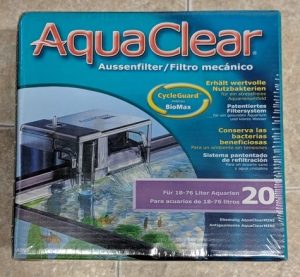
The Fluval AquaClear is a hang on back (HOB) aquarium filter that comes in five different sizes: 20, 30, 50, 70, and 110. In my opinion the AquaClear is the best value HOB filter you can buy. It costs slightly more than most of the big box store brands, such as Aqueon or Marina, because it is definitely a premium product. Its defining feature is its media basket and the volume of filter media it is designed to accommodate.
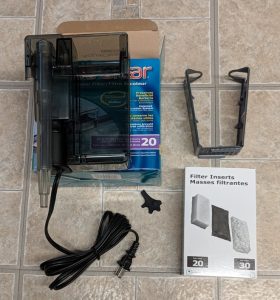
Above is a brand new un-boxed AquaClear filter. Included in the kit you receive the filter, the media basket, and one set of media. The standard configuration comes with one foam sponge, one bag of activated carbon, and a bag of bio rings. Below is an example of a brand new media basket with starter media.
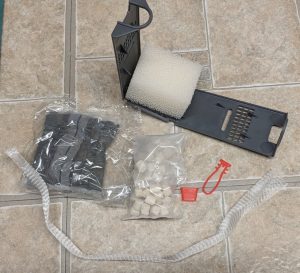
These baskets are the key to the AquaClear's greatness. They make cleaning the filter extremely easy because they slide in and out easily while keeping the media in place. As water enters the filter it rises from the bottom of the basket up to the top. In this way the AquaClear functions similarly to a canister filter, where the media is stacked in layers.
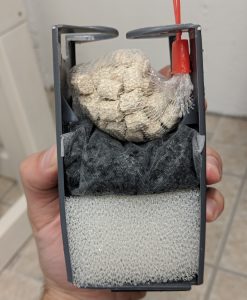
Most HOB filters feature one thin layer of sponge and a disposable filter floss insert, requiring frequent replacement of the disposable insert. The AquaClear packs a lot more biological filtration capability. And if configured correctly, it never requires media replacement. This makes it a very cheap filter to operate. You may save $10 buying a cheaper HOB up front, but over one year you will spend several times that on disposable filter inserts.
Fluval's foam inserts are great for both mechanical and biological filtration. They trap debris as water passes through them, and have a huge surface area to culture bacteria. Rather than using the carbon bag, I recommend running the AquaClear with two foam insert sponges. Carbon is not really necessary unless you are specifically trying to remove medication or heavy metals, and two sponges will give you a lot more mechanical filtering capacity.
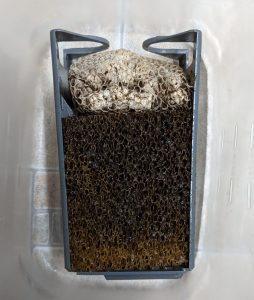
As you can see above, the foam inserts trap a huge amount of debris, eventually turning brown. The best thing about them is they never have to be replaced; you just squeeze them out in a bucket of aquarium water to clean them. Below is the same media basket after being rinsed out. Using aquarium water maintains the colony of beneficial bacteria that convert ammonia from fish waste into nitrite and then nitrate. Rinsing a filter sponge in tap water that contains chlorine or chloramine can kill off this bacteria.
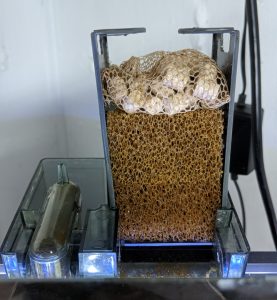
The quality of the Fluval media is tough to beat, which is what I think makes the AquaClear one of the best all around HOB filters you can buy. I do use other HOB models in my fish room, but I don't purchase the OEM filter refill inserts for any of them. This post covers how I maintain my other filters economically using DIY methods.
I run an AquaClear 20 on my 20 gallon guppy tank (with an intake sponge) and have had great results. I have also used the same filter for a shrimp tank, and a 10 gallon betta tank.
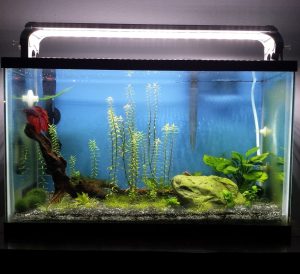
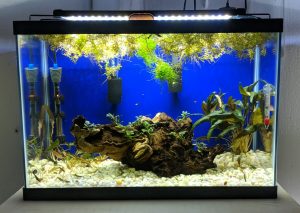
Note: I did not receive compensation or free products from Fluval for this review.
